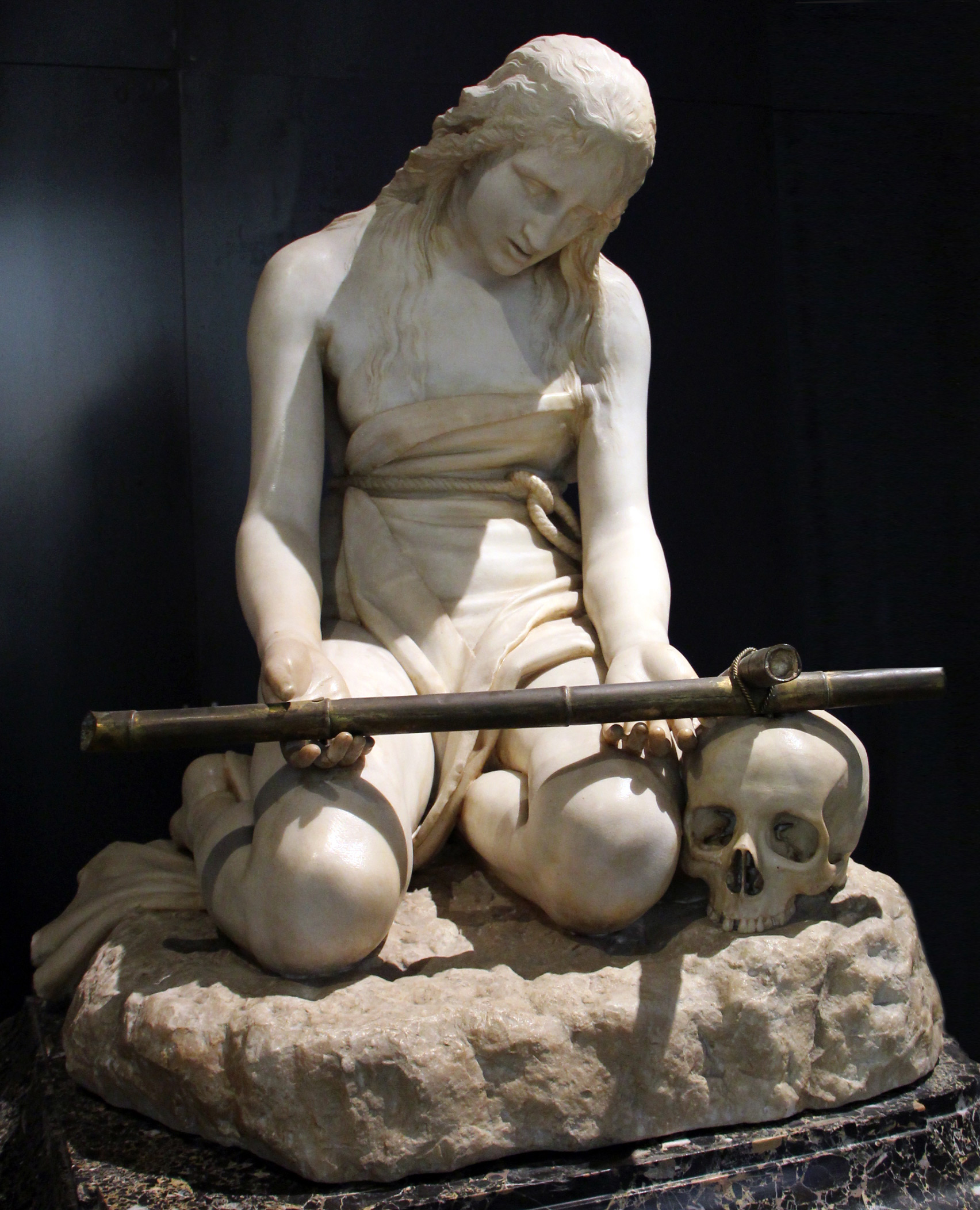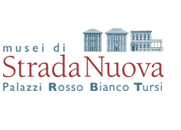
Click here to view image
Penitent Magdalene
Maria Brignole-Sale De Ferrari Duch. di Galliera 1889 Genova - legato
Canova, Antonio
sculpture
1794 - 1796 - XVIII
PB 209
Unità di misura: cm; Altezza: 95; Larghezza: 70; Profondità: 77
marmo e bronzo dorato
Canova: Sketching in Clay - Washington, The National Gallery of Washington - 11/06/2023 - 09/10/2023<br>Canova. Eterna Bellezza - Roma, Palazzo Braschi - 09/10/2019 - 15/03/2020<br>Canova e l'antico - Napoli, MANN - Museo Archeologico Nazionale - 29/03/2019 - 30/06/2019<br>La Maddalena tra peccato e penitenza - Loreto, museo-antico tesoro della Santa Casa - 2016-2017<br>Canova. L'invenzione della gloria. Disegni, dipinti e sculture - Genova - 2016<br>Hayez. Venezia 1791 – Milano 1882 - Milano, Gallerie d'Italia - Piazza Scala - 06/11/2015 - 21/02/2016
The Maddalena Penitente, one of Antonio Canova's most admirable marbles, constitutes the outcome of a long process of invention and study that began in the early 1790s and lasted, in the execution phase, from 1794 to the end of 1796. Commissioned by his friend and administrator Tiberio Roberti (1749-1817) from Bassano del Grappa. The sculpture was preceded by a drawing from Bassano's notebook Eb, a plaster model, identified with a sculpture in the Civic Museums of Padua and two sketches: one in earthenware, now in the collections of the Venetian Civic Museums, and one in clay, still in the Canovian collection of the Museums of Bassano del Grappa. By April 1794, the sculpture was in process and was finished if not before Ascension Day 1796, then immediately after. Posteriorly, on the drape that encircles the figure's sides, we read the date 1796, which an earlier ancient recalculation had mistakenly changed to 1790. The long experience of those years in the practice of bas-relief, had led Canova to reach «unexpected goals» (Mazzocca 2009) in «expression, contours, drapery», meaning in expressing the forms of the body and uniting them with feeling. The naturalness in the rendering of the marble with effects of strong sensuality in the figure and face from which the contrition and suffering of the young sinner's long penitential fasting, bordering on exhaustion, are rendered with a very refined technique, “Execution magique,” which achieves the result of a “soufflé créateur” (Quatremére de Quincy 1834). In 1797 Roberti renounced the purchase of the sculpture because of economic difficulties related to Napoleon's battles in the Venetian countryside. Francesco Milizia, the Venetian critic, procured Canova a new buyer in Giovanni Priuli (1763-1801), a Venetian national auditor at the Tribunal of the Sacred Rota, who virtually became its owner before June 1797, but did not take possession of it. During the Directoire years the sculpture was purchased for 1,000 zecchini (twice what was initially budgeted!) by Jean-François Julliot, a marchand, a man of great wealth obtained from para-military supplies during the Napoleonic campaigns in Italy and Egypt. On March 28, 1808, the lawyer Giovanni Battista Sommariva (1757-1826), a leading member of the Milanese triumvirate that had ruled the second Cisalpine Republic between 1800 and 1802, announced to Canova the purchase, probably made in Milan in late 1806, of the Penitent Magdalene together with the Apollino. In his Parisian palace, the exaltation of the “affects” was achieved with spectacular lighting, one would say today targeted, already fully Romantic, if not Symbolist, inside a boudoir lined in mousy gray silks with a mirror reflecting back to the visitor unseen. Exhibited in the Salon in October of that year, the sculpture was the object of universal admiration. Later transferred from Sommariva to Milan, it was sold to the marquis Aguado, ending up in 1839 back in Paris. Upon the latter's death, shortly thereafter, it was purchased for 59,000 francs by Raffaele de Ferrari, duke of Galliera, and placed in his Parisian residence, the Hôtel de Matignon. It then passed to Genoa in 1889 by legate of his widow, Maria Brignole-Sale de Ferrari, duchess of Galliera.




